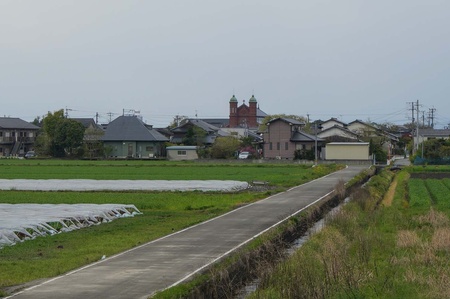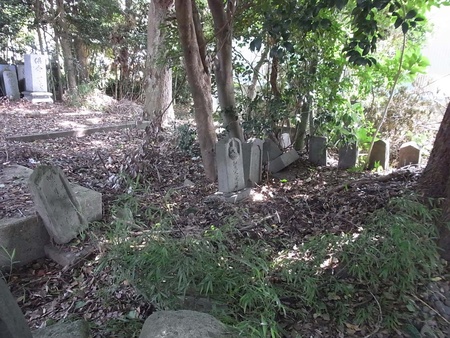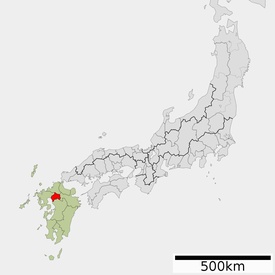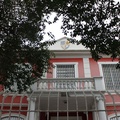It is common to hear among Nikkei Brazilians that we are “Japanese in Brazil” and “Brazilians in Japan”. And that, therefore, unlike our ancestors, we are condemned to always be a minority in some way or another. However, the truth is that my ancestors were also a minority in Japan – and lived on the margins of Japanese society for hundreds of years.
They were “kakure kirishitans,” as hidden Christians in Japan under the strict ban on Christianity during the Edo period (1603-1867) were described. Between the 1910s and 1950s, many of my ancestors migrated to Brazil and other Latin American countries. And in contrast to the centuries of silence and isolation in Japan, they played an active role in the Japanese-Brazilian community – building schools, churches, and helping other immigrants adapt to Brazilian society.
This is the story of two places linked by history, faith and blood – the “village of miracles” of Imamura, in the present-day city of Tachiarai, Mii District, Fukuoka Prefecture, Japan, and the “promised land” in the neighborhood do Gonzaga, municipality of Promissão, state of São Paulo, Brazil.
The origin of the Christians of Imamura
The current village of Imamura would be an ordinary rice farming village in the Chikugo Plain (an area in southern Fukuoka Prefecture, close to the city of Kurume), if it were not for the huge Gothic brick church, similar to medieval churches in northern Europe .

The church is the most visible sign of a Christian community that has existed in the area since 450 years ago, 300 years before Roman Catholicism was officially established in Japan. These Christians were “hidden” from the rest of the world until they were contacted by the Catholic Church in 1867 , therefore, it is not a simple task to discover how and when they converted.
Like other occult Christians, they had very particular beliefs and rituals. In particular, the Christians of Imamura believed in a kind of saint called “Joan Mataemon” who supposedly introduced Christianity to the village, performed miracles, and died crucified as a martyr in the nearby village of Hongo. 1, 2, 3
What is known with almost certainty is that Christianity was introduced into the then province of Chikugo at some point in the second half of the 16th century, when the region was governed by the clan of Sorin Otomo, lord of the province of Bungo (corresponding to the current province of Oita) converted to Christianity, and when Jesuits like Luís de Almeida were free to preach in the region. 1, 2, 3 From the few documents that survive from this time, it is known that Imamura was then called “Tanakamura” and that the brothers Sakyo and Ukyo Hirata lived in the village, attributed as ancestors of a large part of the region's Christians. 1.5
In 1598, following the San Felipe ship incident, Shogun Hideyoshi Toyotomi arrested and executed 26 missionaries to Japan in Nagasaki, who would later be known as the “26 Martyrs of Japan”. After this event, Christianity began to be persecuted in Japan, but it is believed that in Imamura the religion was tolerated for a certain time due to the fact that Chikugo province was governed by Christian samurai, such as Hidenare Morikami, Yoshimasa Tanaka and Tadamasa Tanaka . 1, 2, 3
But in 1638, with the failure of the Shimabara Rebellion against the Tokugawa Shogunate, Christianity would be completely banned throughout Japan for the next 235 years, forcing all Christians who were not killed or converted to remain hidden.
Life in the shadows and discovery
The Tokugawa Shogunate's relentless persecutions against the “kakure kirishitans” resulted in thousands of executions, and were almost completely successful in eradicating Christianity from Japan. For example, the city of Kurume is known to have had around 7,000 Christians before the ban, but they were never mentioned in History again. 4
In fact, it is practically a miracle that during centuries of prohibition, the Christian religion survived and thrived in a small rural area just 10 km from the town of Kurume. This was only possible, first, because Christians maintained the facade of Buddhists at all times, including attending and burying their dead in Buddhist temples, and performing rituals associated with Christianity in total secrecy, such as hiding a paper cross under the chest of the Dead. 1, 2 Secondly, because the inhabitants avoided mixing and marrying non-Christians, meaning that over time, most of the inhabitants of Imamura had only two surnames: Hirata and Aoki. 3, 5

In the second half of the 19th century, Japan, previously isolated from most of the world during the Edo era, was increasingly pressured by the powers of Europe to open up to trade. The practice of the Christian religion remained prohibited for the Japanese, but it was permitted for European traders in the port city of Nagasaki, where the French had built the Catholic Church of Oura. Secretly, the Catholic Church took the opportunity to find and establish contact with the communities of “kakure kirishitans” spread across the island of Kyushu – in 1867, it was the turn of the Imamura community. 2, 3
The discovery that there were other Christians in Japan, under the leadership of the great Church of Rome, brought enormous enthusiasm to the inhabitants of Imamura. The village's spiritual leader, Yakichi Hirata, made several trips to Nagasaki, teaching Catholic dogma to the other villagers at Saihachi Aoki's store. Lack of care, however, led to such activities being discovered by authorities in Takahashi District (roughly corresponding to present-day Mii District and present-day Tachiarai City), resulting in around a hundred arrests. 2, 3 At that time, authorities found that there were around 867 kakure kirishitans in the region, 500 in Imamura and the rest in nearby villages. 3, 5
For reasons that are not very clear, all the villagers were released in 1867 with the promise of the village chief that they would be converted to Buddhism, which never happened. 1, 3 In 1873, the ban on Christianity was finally revoked in Japan, and from 1879, Christians in the region began to be baptized as Catholics by Imamura's first priest, the Frenchman Jean-Marie Corre. The first church, a simple wooden church, was built in 1881 by Father Michel Sole and expanded in 1900. In 1912, there were 2,713 Catholics living in Imamura and nearby villages. 3, 5
References
1. 伊藤慎二, 考古学からみた筑後今村キリシタン, 西南学院大学国際文化論集 29(2), 71-97, ISSN 0913 -0756, March 2015.
1.第2号, March 2014, ISSN 2187-6266.
3. 佐藤早苗, 奇跡の村 : 隠れキリシタンの里, 河出書房新社, 2002.
4.カトリック久留米教会, visited on 22 Jul 2021.
5. 中川憲次, カトリック愛苦会修道会の歴史的研究(1)草創期, Fukuoka Jogakuin University bulletin Human relations (9), 47-53, ISSN 13473743, March 2008 .
© 2021 Edson Aoki




